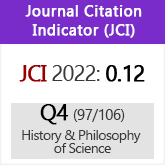Proles sine matre creata: The Promethean Urge in the History of the Human Body in the West
DOI:
https://doi.org/10.3989/asclepio.2013.01Keywords:
idea of the body, archetypal psychology, Golem, Homunculus, automatonAbstract
Since the beginning of modernity there has been an observable tendency in Western thought to consider the human body as susceptible of technical manipulation, to the extreme of conceiving the possibility of manufacturing it. The figures of the homunculus and the automaton, the heirs of the Golem, represent the clearest embodiment of this aspiration. This paper explores the psychology underlying this plan, based on the psychological theory of C.G. Jung, and developed more recently by J. Hillman, on the hypothesis that the plan involves the denial of the feminine and, therefore, of the more truly psychological aspects of humanity, in the name of a unilaterally rationalistic and materialistic worldview. From the viewpoint of the authors mentioned, the mythicalpsychological reference capable of providing the fundamental key to this project would be Prometheus.
Downloads
References
Arnim, Ludwig Achim von (1982), Isabel de Egipto o el primer amor de Carlos V, Barcelona, Bruguera.
Buzzati, Dino (1960), Il grande ritrato, Milano, Mondadori.
Campbell, James (1986), The Masks of God: Occidental Mythology, New York, Penguin Books.
Drux, Rudolf (1986), Marionette Mensch. Ein Metaphernkomplex und sein Kontext von E.T.A. Hoffmann bis Georg Büchner, München, Fink.
Frick, Karl (1964), "Zum Homunculus-Problem", Sudhoffs Archiv, pp. 174-177.
Goethe, Johann Wolfgang (1999), Faust, (Sämtliche Werke), Frankfurt, Deutscher Klassiker Verlag.
Hillman, James (1972), The Myth of Analysis, Evanston, Northwestern University Press.
Hoffmann, Ernst Theodor Amadeus (1985), "Der Sandmann". En: Nachtstücke (Sämtliche Werke), pp. 11-49, Frankfurt, Deutscher Klassiker Verlag.
Jung, Carl Gustav (1969), The Structure and Dynamics of the Psyche, Collected Works, vol. 8, London, Routledge.
Jung, Carl Gustav (1970), Mysterium coniunctionis, Collected Works, vol. 14, London, Routledge.
Knapp, Bettina (1979), The Prometheus Syndrome, Troy, Nueva York, The Whitston Publishing Company.
Mandressi, Rafael (2003), Le regard de l'anatomiste. Dissections et invention du corps en Occident, Paris, Seuil.
Montiel, Luis; González de Pablo, Ángel (coords.), (2003), En ningún lugar. En parte alguna. Estudios sobre la historia del magnetismo animal y del hipnotismo, Madrid, Frenia.
Montiel, Luis (2006a), Daemoniaca. Curación mágica, posesión y profecía en el marco del magnetismo animal romántico, Barcelona, MRA.
Montiel, Luis (2006b), "Síntomas de una época: Magnetismo, histeria y espiritismo en la Alemania romántica", Asclepio, LVIII (2), pp. 11-38.
Montiel, Luis (2006c), "Magnetismo romántico. El paciente. La mujer. La república", Dynamis, 26, pp. 125-150. PMid:17214136
Montiel, Luis (2008a), "Sobre máquinas e instrumentos (I): el cuerpo del autómata en la obra de E.T.A. Hoffmann", Asclepio, LX (1), pp. 151-176.
Montiel, Luis (2008b), "Sobre máquinas e instrumentos (II): El mundo del ojo en la obra de E.T.A. Hoffmann", Asclepio, LX (2), pp. 207-232.
Montiel, Luis (2008c), Magnetizadores y sonámbulas en el romanticismo alemán, Madrid, Frenia.
Montiel, Luis (2008), "La primera 'rebelión del sujeto': la medicinamagnética del romanticismo alemán", En: Ortiz Gómez, Teresa; Olagüe de Ros, Guillermo; Rodríguez Ocaña, Esteban; Menéndez Navarro, Alfredo; Gil García, Eugenia; Luna Maldonado, Marco Antonio; Sevilla Olmedo, Maite; Gómez Nú-ez, Antonio J. (coords.), La experiencia de enfermar en perspectiva histórica. XIV Congreso de la Sociedad Española de Historia de la Medicina, Granada, Universidad de Granada, 11-14 de junio de 2008, pp. 153-157.
Montiel, Luis (2009a), "Une révolution manquée: le magnétisme animal dans la médecine du romantisme allemand", Revue d'histoire du XIXe siècle, 38 (1 1., pp. 61-77.
Montiel, Luis (2009b), "Der Kampf mit dem Dämon. Daemoniaca aus der Perspektive des Jenaer Professors der Medizin Dietrich Georg Kieser (1779-1862)". En: Wolf-Braun, Barbara (ed.), Medizin und Okkultismus, pp. 22-44, Frankfurt am Main, Schriftenreihe des Senckenbergischen Instituts für Geschichte und Ethik der Medizin, Bd. 2.
Montiel, Luis (2010), "Más allá de la lujuria: la procreación sin madre (el homúnculo, el gólem y el autómata)". En: Navarro, Paloma; Jiménez, Ana; Martínez, Unai; González, Cristina (eds.), Lujuria y deseo: un avance y una mirada atrás, pp. 27-44, Sociedad de Historia y Filosofía de la Psiquiatría.
Neher, André (1987), Faust et le Maharal de Prague. Le mythe et le réel, Paris, Puf.
Newman, William R. (2004), Promethean Ambitions. Alchemy and the Quest to Perfect Nature, Chicago and London, The University of Chicago Press. http://dx.doi.org/10.7208/chicago/9780226577135.001.0001
Nietzsche, Friedrich (1999), "Die Geburt der Tragödie". En: Colli, G.; Montinari, M. (eds.), Kritische Studienausgabe, Berlin & New York, DTV & de Gruyter.
Paracelsus, Theoprastus (1982), Werke, Basel, Schwabe.
Sauer, Liselotte (1983), Marionetten, Maschinen, Automaten: Der künstliche Mensch in der deutschen und englischen Romantik, Bonn, Bouvier
Scholem, Gershom (1953), "Die Vorstellung vom Golem in ihren tellurischen und magischen Beziehungen", Eranos, 22, pp. 235-289.
Schubert, Gotthilf Heinrich von (1833), Die Geschichte der Seele, Stuttgart und Tübingen, Cotta.
Yates, Frances (1979), The Occult Philosophy in Elizabethan England, London, Routledge.
Wyder, Margrit (2005), "Es wird ein Mensch gemacht. Faust II und Frankenstein". En: Stulz, Peter; Nager, Frank; Schulz, Peter (eds.), Literatur und Medizin, pp. 53-68, Zürich, Chronos.
Published
How to Cite
Issue
Section
License
Copyright (c) 2013 Consejo Superior de Investigaciones Científicas (CSIC)

This work is licensed under a Creative Commons Attribution 4.0 International License.
© CSIC. Manuscripts published in both the printed and online versions of this Journal are the property of Consejo Superior de Investigaciones Científicas, and quoting this source is a requirement for any partial or full reproduction.All contents of this electronic edition, except where otherwise noted, are distributed under a “Creative Commons Attribution 4.0 International” (CC BY 4.0) License. You may read here the basic information and the legal text of the license. The indication of the CC BY 4.0 License must be expressly stated in this way when necessary.
Self-archiving in repositories, personal webpages or similar, of any version other than the published by the Editor, is not allowed.















